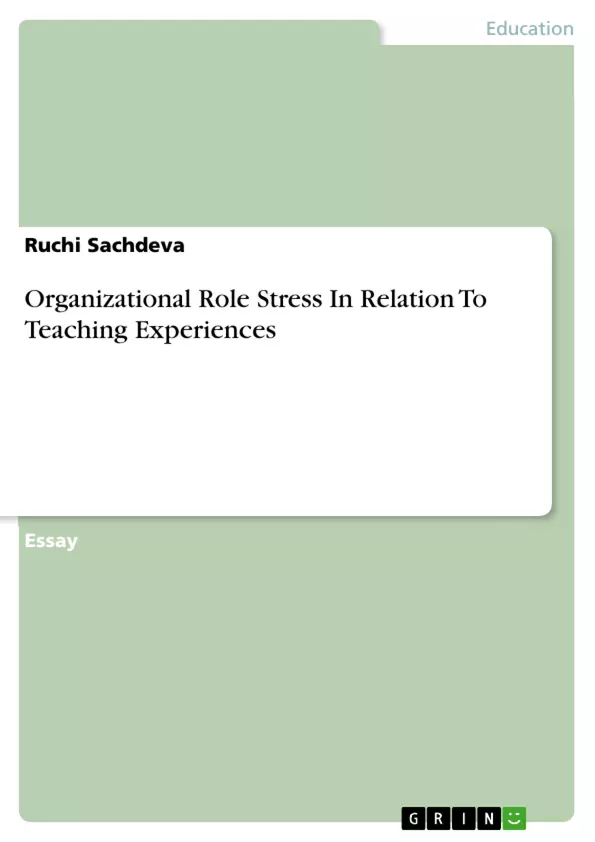The present paper studied the organizational role stress in teaching profession. Due to technological advancements, the burden on a teacher’s part is now going to increase day by day. The investigator studied organizational role stress in college teachers with a sample of 200 to find out the organizational role stress in context of a teaching experience. A descriptive survey method was used for the investigation with the use of organizational role stress scale by Udai Pareek (1982). The finding of the study was that there is a significant relationship between organizational role stress and teaching experience in college teachers.
Inhaltsverzeichnis (Table of Contents)
- Abstract
- Introduction
- Statement of the Problem
- Objective
- Hypotheses
- Delimitations
- Methodology
- Sampling
- Research Tool
- Findings
- References
Zielsetzung und Themenschwerpunkte (Objectives and Key Themes)
The study investigates the relationship between organizational role stress and teaching experience in college teachers. It aims to analyze the dimensions of organizational role stress among college teachers in Patiala District, Punjab, and determine if there is a correlation between these dimensions and their teaching experience.
- Organizational role stress in the teaching profession
- The impact of teaching experience on stress levels
- The dimensions of organizational role stress
- The relationship between stress and job satisfaction
- The role of administrative support and working conditions in teacher stress
Zusammenfassung der Kapitel (Chapter Summaries)
- Abstract: The study examined the relationship between organizational role stress and teaching experience in college teachers, finding a significant correlation between the two.
- Introduction: This section provides a background on the concept of stress and its impact on individuals, particularly in the teaching profession. It highlights the various sources of stress for teachers, including student interactions, inadequate administrative support, and poor working conditions.
- Statement of the Problem: The study specifically focuses on the relationship between organizational role stress and teaching experience.
- Objective: The objective of the study is to analyze the dimensions of organizational role stress among college teachers in Patiala District, Punjab, and determine if there is a correlation between these dimensions and their teaching experience.
- Hypotheses: The study hypothesizes that there is no significant relationship between organizational role stress and teaching experience.
- Delimitations: The study is limited to college teachers in Patiala District, Punjab.
- Methodology: The study utilizes a descriptive survey method, employing the Organizational Role Stress (ORS) scale by Udai Pareek (1982).
- Sampling: The sample consists of 200 college teachers from Patiala District, Punjab.
- Research Tool: The study employs the Organizational Role Stress (ORS) scale by Udai Pareek (1982) to collect data.
- Findings: The findings indicate a significant relationship between organizational role stress and teaching experience, with younger and less experienced faculty members experiencing higher levels of stress.
Schlüsselwörter (Keywords)
This study focuses on organizational role stress, teaching experience, college teachers, stress management, job satisfaction, and the impact of global changes on the education sector.
- Citar trabajo
- Ruchi Sachdeva (Autor), 2016, Organizational Role Stress In Relation To Teaching Experiences, Múnich, GRIN Verlag, https://www.grin.com/document/340652



